#SemiOpen Species
Explore tagged Tumblr posts
Text
Updating NPC ref
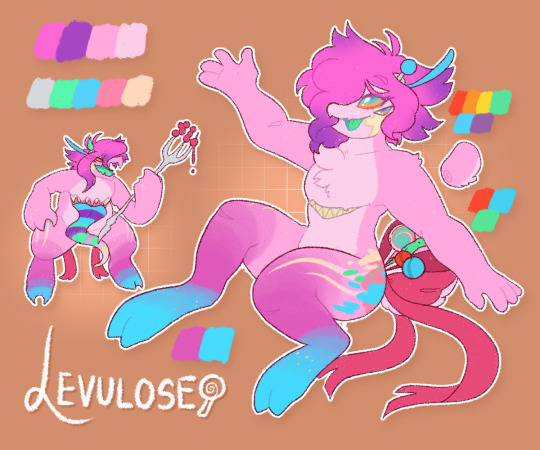
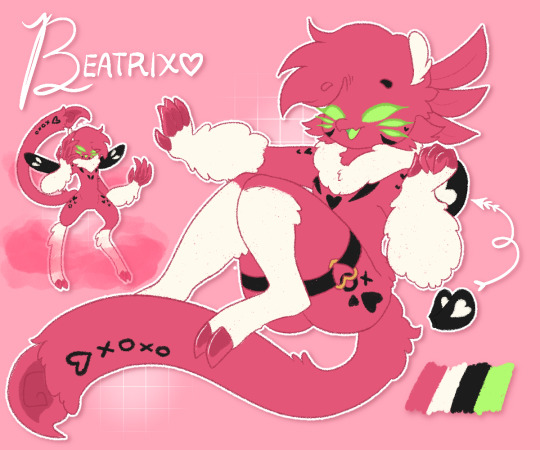

Just updated some of Vrynaga NPC's ref sheet 🥹💞
#art#digital#digital art#semi open species#vrynaga#vrynagaspecies#open species#vrynaga species#semiopenspecies#semi openspecies#semi#open#species#semiopen species
7 notes
·
View notes
Text
Great Backyard Bird Off - Europe (poll 8)


Bird Info & Submission Reasons
Common Wood-pigeon (Columba palumbus)
"coo COO coo. coo coo.COO COO COO! Coo coo."
"COO COO COO! Coo coo."
Distinctive, large bulky gray pigeon with a pale neck patch (lacking on juvenile in late summer–autumn). Neck patch is large and white throughout majority of range, but birds in Azores, Madeira, and much of western Asia have smaller, tan-colored patches. Bold white wing band striking in flight; tail broadly tipped black. Inhabits wooded and semiopen habitats, including towns and gardens. Forms flocks, especially in winter. Often rather unaware, and frequently crashes noisily and clumsily out of hedges and bushes. Display flight consists of a flap-flap-flap climb followed by a descending glide. Gives a low, throaty series of coos: “hrrruu-hoo-who-who.” (eBird)
also found in: portions of western Asia and north Africa
European Goldfinch (Carduelis carduelis)
"Such a colorful fellow, I especially love the vivid yellow streak on their wings"
"because they're colourful"
"they are cute and funny"
"They're little guys who fly around and sit on the TB aerials and they sound so beautiful, they make me think of magical crystals"
also found in: northern Africa, portions of the Americas, and Oceania
Image Sources: Pigeon (James Kennerley), Goldfinch (David Irving)
Areas which are italicized represent the non-native range of the species. Whether introduced on purpose on or accident, these species may have become invasive in this range. Despite their potential impact on native wildlife, please do not leave disparaging comments on these polls. Their purpose is to celebrate people's love of these species.
#Great Backyard Bird Off#bird poll#animal poll#european birds#common wood pigeon#european goldfinch#common goldfinch
35 notes
·
View notes
Text
BOTD: Black-throated Magpie-Jay

Photo: Ad Konings
"Spectacular, large, and very long-tailed jay of tropical lowland forest, plantations, and semiopen areas with hedges and tall trees; ranges from humid to fairly dry areas. Usually in small groups and can be surprisingly inconspicuous if feeding quietly. At other times, unavoidably noisy and impossible to overlook. No similar species in range: note crest, black face and throat, and very long, white-edged tail that flows out behind in flight."
- eBird
#birds#black throated magpie jay#birds of north america#north american birds#birds of mexico#birds of america#american birds#corvids#passerines#jays#magpie jays#bird#birding#bird watching#birdblr#birblr#bird of the day#Calocitta colliei
97 notes
·
View notes
Note
So what youre doing humanized griffins as a species now? How original totally something to profit off of there 🙄
Btw if doing Polar region that's racist there my guy and stolen as hell, great job at getting rid of all her influence tho it totally worked
I'm sorry perhaps you misread the paragraph there I'm not planning any profit at all just vibing with silly creatures. Here though so not having to look back either this is what was said;

I can't say I have much desire for closed species anymore anyways truthfully after all of this and trying a few others. Semiopen is fine though I like an ease of accessibility for people to play with. Rare traits will be more locked but can be got in random events and winning raffles so not a penny spent just not commonly done to keep the rarity actually relevant for lore reasons. Also it's just one of two species for the server honestly but anyways the cute graphics @the-bone-vault did for them to help where not just the big bird kitties, don't mind the lack of clothes that's just to show off the traits had not how they naturally are


As for the polar comment, I've had it pointed out stealing but it's not stealing anything to reuse a concept I myself was already playing with so if you want to explain it being stolen then maybe I can figure out better what you mean? I know her skintone don't match most in her tribe but that's from her mother originally being from a different region and moving into the culture thus the child is a blend of two currently. Not that many have the lore here I might just be rambling because I'm excited with the project even if it never gets out there it's a fun project with friends to plan on.
#not fr#Shameless advertisement#Honestly its my blog I do what I want#Sad the Flight Rising theme is slowly being lost tbh
0 notes
Text
Semiopen robot species :]]]


#the designs ive made for it#come join us#im making some designs to give away too#robot#semi open species
1 note
·
View note
Text
Ciel, my Dreamcatcher (Species by Midnight197)

4 notes
·
View notes
Text

* The one thing I forgot to mention is that Douglas is pretty tall. Like you’d pass him and make note of it. 🌲
* Douglas is a Nekadap! Please check out the group on deviantart. It’s just getting started and there’s an MYO event for new members
https://www.deviantart.com/snowbein/art/Nekadap-Free-MYO-event-805727096
1 note
·
View note
Text
A Visit From The Lust Tribe

The Lust Tribe Leader have visited to Asorium along with their beloved tribe members to celebrate the month of love!~
Join Vrynaga Discord to participate in the event!
#vrynaga#vrynaga species#semi open species#semi-open species#semiopen species#semiopenspecies#vrynagaspecies#open species
1 note
·
View note
Photo

Auction is being held on DA! https://www.deviantart.com/rufliec/art/Strawberry-Beignet-Munjin-OPEN-841397754?ga_submit_new=10%3A1589214231&ga_type=edit&ga_changes=1| Also be sure to join the discord where events are being held for these little guys! discord.gg/43Wb73P
#species#semi open species#semiopen#food#foodadopt#foodadoptable#adopt#auction#adoptableauction#adoptable auction#food species#cute adopt#cute adoptable#adopt sale#adoptable sale#adoptable#adoptables#beignet#strawberry#strawberry adopt
1 note
·
View note
Note
I'm a CS owner and looking at blogs like this keeps me humble. I do most of the work. My staff is all volunteers and mostly just do adopts(And they keep all money earned). I try to make it so that you can earn MYOs without paying me a single dime. I actively allow people to make unofficial designs. Any graphics my admins do for the group, I've paid them for. And I've been starting to transition the CS to open or semiopen because what the big guys do with CS makes me sad.
that’s good almost as if the idea of a closed species is not user-friendly from the get-go due to the artificial difficulty in joining
2 notes
·
View notes
Text
Updating Reference Sheets
Updating some reference sheet for Vrynagas and as well as making a new reference sheet for the mascot, Peace uwu
If you're interested in knowing the species you could go to Vrynaga Discord
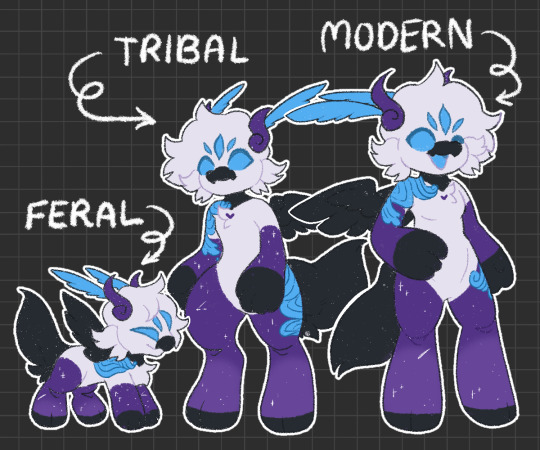
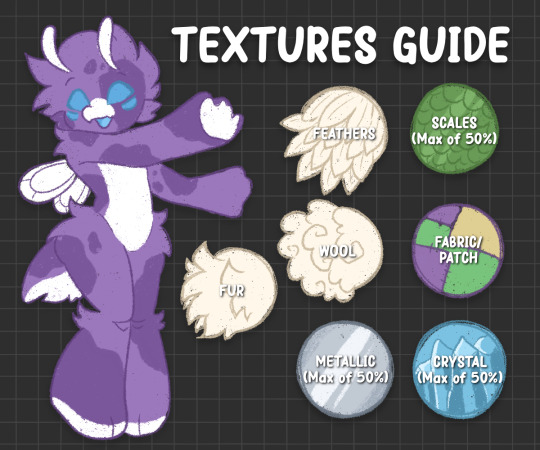

#art#digital#digital art#vrynaga#vrynagaspecies#original species#openspecies#open species#semi openspecies#semiopenspecies#semiopen species#semi open species#vrynaga species
4 notes
·
View notes
Photo
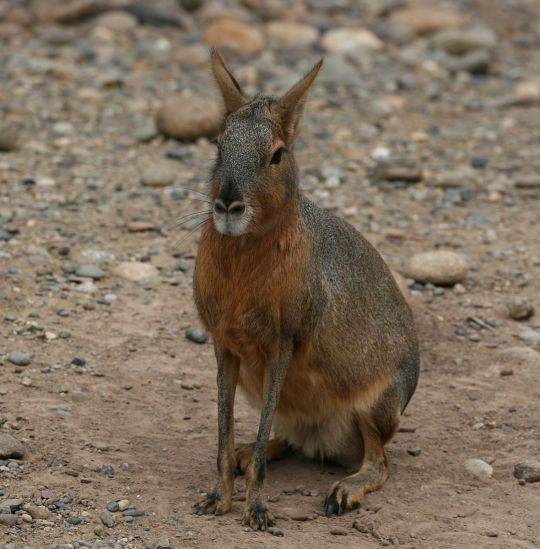
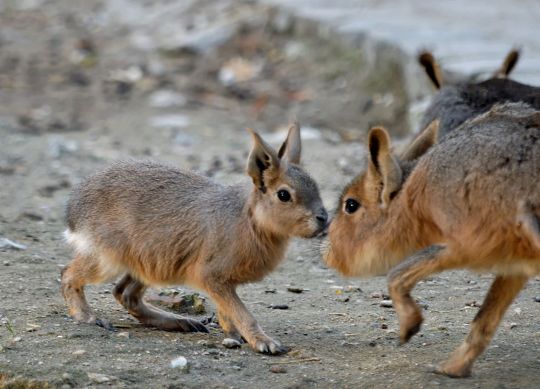
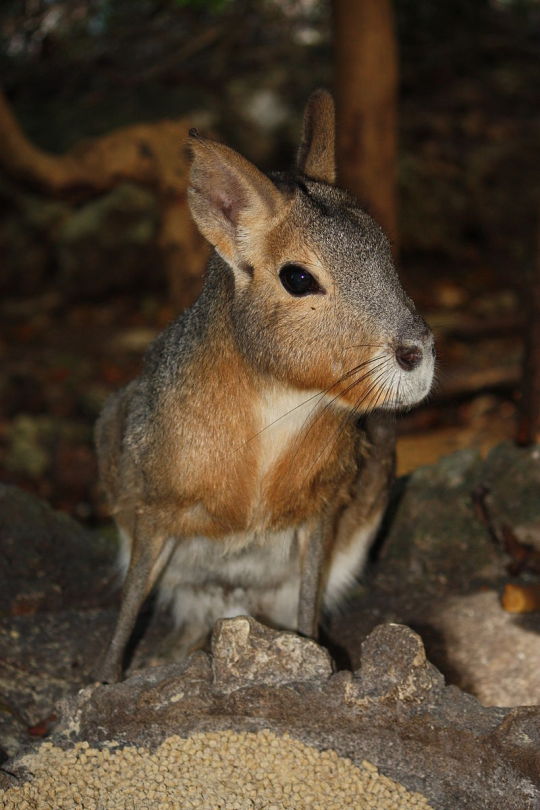
Patagonian mara (Dolichotis patagonum)
The Patagonian mara is a relatively large rodent in the mara genus Dolichotis. This herbivorous, somewhat rabbit-like animal is found in open and semiopen habitats in Argentina, including large parts of Patagonia. It is monogamous, but often breeds in warrens shared by several pairs. The average Patagonian mara has a head and body length of 69–75 cm with a tail of 4–5 cm.They prefer to live in habitats with shrub cover, but they also inhabit overgrazed and barren soils in the Monte Desert biome. They have adapted well to a cursorial lifestyle on the open plains and steppe, with long legs, reduced clavicle, and well-developed sensory organs making them capable of running and communicating in these open habitats. When running, maras have been compared to deer and antelope. Maras are largely herbivorous. They feed primarily on green vegetation and fruit. Maras are primarily diurnal and around 46% of their daily activities involve feeding. Patagonian maras are considered to be a near threatened species.
photo credits: Luis Argerich, Jastrow, Postdlf
#Patagonian mara#Dolichotis patagonum#mara#zoology#biology#biodiversity#science#wildlife#nature#animals#cool critters
473 notes
·
View notes
Text
BOTD: Orange-fronted Parakeet

Photo: Peter Wilton
"Parakeets are fairly small parrots, usually with a relatively long and somewhat pointed tail. This species is fairly common in tropical lowlands, mainly in semiopen areas with scattered trees, woodlands, and locally in towns and suburban areas. Often in small flocks or in pairs."
- eBird
#birds#orange fronted parakeet#birds of north america#north american birds#parakeets#parrots#birds of mexico#birds of central america#birding#birdblr#birblr#bird watching#bird of the day#Eupsittula canicularis
16 notes
·
View notes
Text
Chompps!







➡️CHOMPPS⬅️
♡INFO♡
•{ABOUT THEM}
-Chompps are creatures that are rarely seen since they normaly go around being invisible
-Their origen is unknown but everybody knows them for being troublemakers
-They have a very childilst attitude and don't really take things seriously
-All of them are genderless but even them can identify as a gender if they want!
-They are ALWAYS SMILING and they don't move their mouth when talking, in fact they talk by telequenesis (by mind) witch is annoying to a point
-They only move their mouth when they are gonna eat
-------------------------------------
•{ABOUT THEIR TAIL}
-Not even they know why their tail is like that but they refer to them as a "virus"
-They can eat throught their mouth of their tail since both of them are connected to their organs
-If their tail is chopped off or anything like that, they die so its very important to them! (Some of them even name them)
-----------------------------------
♤RULES♤
-They are semi open BUT some stuff is closed, you can only get the closed stuff throught adoptions im doing
Soon for now
-Please do not copy Newt's desing! >M<
-Any other stuff like 2 heads, more arms, floating flames...etc you must ask me!
-Please give me credit with any of this names: caroolcfa/tropical fox/moonpaw_17 THANKS!!💙
0 notes
Photo

New oc
MaiMai is apart of a semiopen species created by my friend @jenndragonarts (heres the group if you’re interested in the species ) She’s somewhat shy and timid, though she can be unintentionally aggressive. She has a hard time expressing how she feels, and gets stressed easily.
5 notes
·
View notes
Text



THE HYACINTH MACAW:
The hyacinth macaw, or hyacinthine macaw, is a parrot native to central and eastern South America. With a length of about 100 cm it is longer than any other species of parrot. It is the largest macaw and the largest flying parrot species, though the flightless kakapo of New Zealand can outweigh it at up to 3.5 kg
Conservation status: Vulnerable (Population decreasing)[Encyclopedia of Life]
Lifespan: 50 years (In the wild)
Mass: 1.2 – 1.7 kg (Adult)
Class: Aves
Scientific name: Anodorhynchus hyacinthinus
Did you know: Hyacinth macaws (Anodorhynchus hyacinthinus) are the longest parrots in the world, reaching a massive 100 centimetres in length
Food and feeding :
The majority of the hyacinth macaw diet is Brazil nuts, from native palms, such as acuri and bocaiuva palms. They have very strong beaks for eating the kernels of hard nuts and seeds. Their strong beaks are even able to crack coconuts, the largebrazil nut pods, and macadamia nuts. The birds also boast dry, smooth tongues with a bone inside them that makes them an effective tool for tapping into fruits. The acuri nut is so hard, the parrots cannot feed on it until it has passed through the digestive system of cattle. In addition, they eat fruits and other vegetable matter. The hyacinth macaw generally eats fruits, nuts, nectar, and various kinds of seeds. Also, they travel for the ripest of foods over a vast area.
In the Pantanal, hyacinth macaws feed almost exclusively on the nuts of Acrocomia aculeata and Attalea phalerata palm trees. This behaviour was recorded by the English naturalist Henry Walter Bates in his 1863 book The Naturalist on the River Amazons, where he wrote that
Distribution and habitat:
The hyacinth macaw survives today in three main populations in South America: In the Pantanal region of Brazil, and adjacent eastern Bolivia and northeastern Paraguay, in the Cerradoregion of the eastern interior of Brazil (Maranhão, Piauí, Bahia,Tocantins, Goiás, Mato Grosso, Mato Grosso do Sul, and Minas Gerais), and in the relatively open areas associated with theTocantins River, Xingu River, Tapajós River, and the Marajóisland in the eastern Amazon Basin of Brazil. Smaller, fragmented populations may occur in other areas. It preferspalm swamps, woodlands, and other semiopen, wooded habitats. It usually avoids dense, humid forest, and in regions dominated by such habitats, it is generally restricted to the edge or relatively open sections (e.g. along major rivers). In different areas of their range, these parrots are found in savannah grasslands, in dry thorn forest known as caatinga, and in palm stands,particularly the Moriche Palm (Mauritia flexuosa).
The hyacinth macaw has escaped or been deliberately released in to Florida, USA, but there is no evidence that the population is breeding and may only persist due to continuing releases or escapes.
Conservation and threat:
The hyacinth macaw is an endangered species due to the cage bird trade and habitat loss. In the 1980s, an estimated 10,000 birds were taken from the wild and at least 50% were destined for the Brazilian market.Throughout the macaw's range, habitat is being lost or altered due to the introduction of cattle ranching and mechanised agriculture, and the development of hydroelectric schemes.Annual grass fires set by farmers can destroy nest trees, and regions previously inhabited by this macaw are now unsuitable also due toagriculture and plantations. Locally, it has been hunted for food, and the Kayapo Indians of Gorotire in south-central Brazil use its feathers to make headdresses and other ornaments. While overall greatly reduced in numbers, it remains locally common in the Brazilian Pantanal, where many ranch-owners now protect the macaws on their land.
The hyacinth macaw is protected by law in Brazil and Bolivia,and commercial export is banned by its listing on Appendix I of the CITES. A number of long-term studies and conservation initiatives are in place; the Hyacinth Macaw Project in the Brazilian state of Mato Grosso do Sul has carried out important research by ringing individual birds, and has created a number of artificial nests to compensate for the small number of sites available in the region.
The Minnesota Zoo with BioBrasil and the World Wildlife Fundare involved in hyacinth macaw conservation.
Referance: wikipedia,Encyclopedia
0 notes